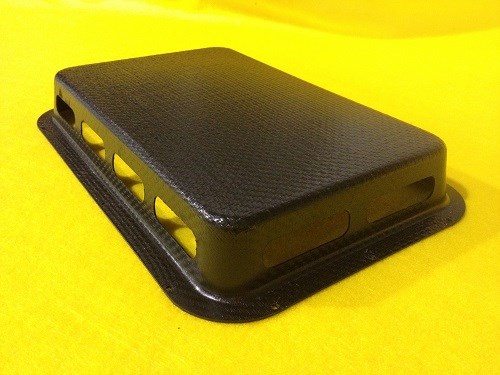Plastic Pallets Manufacturer Gets Grant To Expand Into Thermoplastic Composites
Indiana-based Jeco Plastics Products recently received a research grant from Purdue University under the IN-Mac program to study how thermoplastic composites with continuous internal fibers in either single or multiple directions develop wrinkles when being molded with multiple cavity thermoforming tools.
Indiana-based Jeco Plastics Products recently received a research grant from Purdue University under the IN-Mac program to study how thermoplastic composites with continuous internal fibers in either single or multiple directions develop wrinkles when being molded with multiple cavity thermoforming tools. The aim is to compete with thermoset composites used in applications such as aerospace and defense components. “Thermoplastic composites are lighter weight, less expensive and have fewer design limitations” says Jeco president and CEO Craig Carson.
Jeco was the first to receive a grant under this program which is tailored to assist companies extend existing technology. In Jeco’s case, the grant focuses on the company ability to design sophisticated multiple cavity thermoforming tools for molding complex structures that cannot be manufactured using other processing technologies. In fact, Carson points out that critical to his company’s selection for the grant is its unique thermoforming capabilities, which were recently used to develop a thermoformed door liner for a cryogenic container to be used by NASA on the International Space Station. In a recent interview, Carson told me that this cryogenic container is formed from a PP composite reinforced with continuous PP fibers which boasts significant durability even in thin gages at cryogenic temperatures of -195˚C (-319˚F).
Jeco’s mainstay has been the design and manufacture of rotationallymolded, highly durable pallets and containers made of LLDPE and reinforced with steel or tension members for the worldwide printing and automotive industries, along with other industries handling heavy product that needs damage protection.
However, this forward-thinking company has developed capabilities that include the ability to produce large plastic structural components made with continuous carbon, fiberglass and PP fibers in a variety of thermoplastics including PP, nylons, PEEK, PEKK, and polysulfones. Carson told me they also have integrated custom woven cloth of various metals and other fibers into laminated thermoplastic structures to create materials with unique properties. “The IN-Mac grant has allowed us to discover how to predict the wrinkling of the fabric and optimize our tool design to minimize this problem.” He also notes that controlling the amount of wrinkling taking place is very difficult, as the necessary sheet control is too limited in existing thermoforming equipment. “It was necessary to develop and fabricate extensive modifications to address this shortcoming”, he notes. He also adds that tooling software currently available does not take into account the within the sheet. “So, after much trial and error, as well as simulation modification and validation, we are now capable of producing, for example, structural components with PEEK and PEKK with unidirectional carbon fibers and PP with bidirectional PP fibers.” Be on the lookout for more extensive coverage on this innovator in an upcoming PT issue.
Want to find or compare materials data for different resins, grades, or suppliers? Check out Plastic Technology’s Plaspec Global material
Related Content
-
ABC Technologies to Acquire Windsor Mold Group Technologies
The Tier One automotive supplier with compounding and blowmolding machine capabilities adds the 50-yr-old molder and moldmaker.
-
How to Optimize Injection Molding of PHA and PHA/PLA Blends
Here are processing guidelines aimed at both getting the PHA resin into the process without degrading it, and reducing residence time at melt temperatures.
-
Automotive Awards Highlight ‘Firsts,’ Emerging Technologies
Annual SPE event recognizes sustainability as a major theme.
















